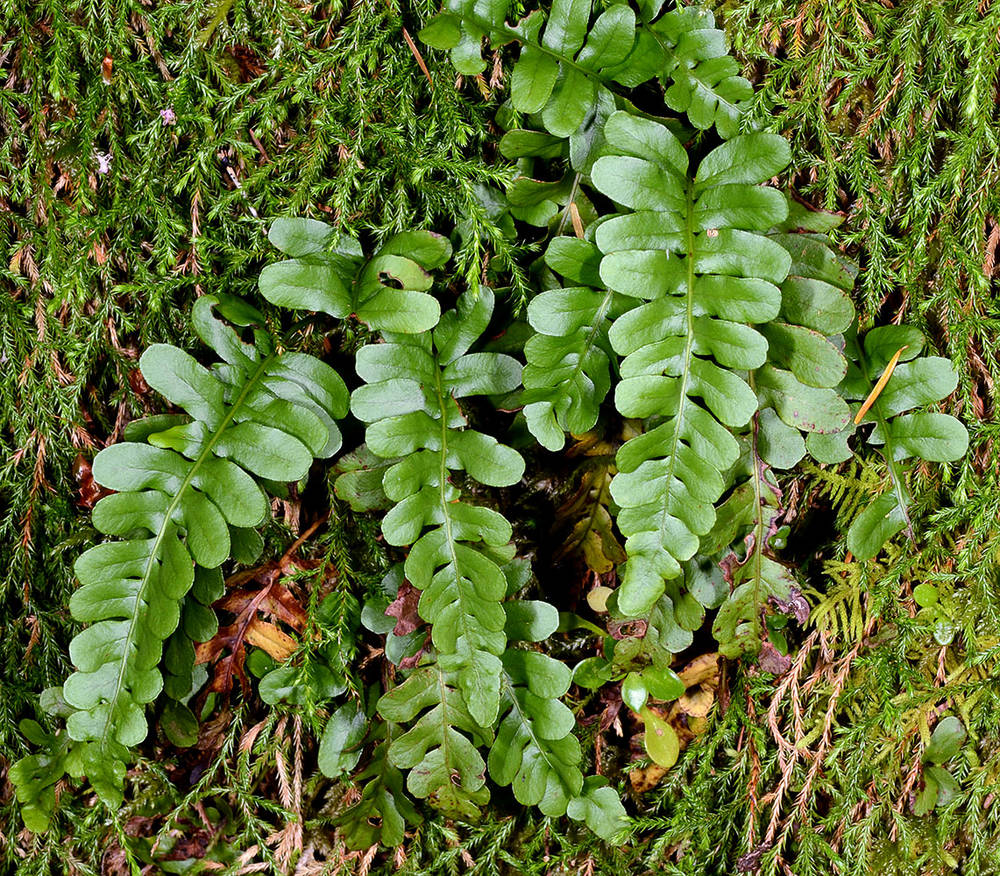
Stems slender, usually white-pruinose, scales dense, lanceolate, toothed, reddish brown, usually with paler margins; taste acrid/bitter.
Leaves to approximately 30 cm long; petiole well developed, up to 10 cm, slender, approximately 1 mm thick.
Blades pinnatifid, slightly leathery, glabrous above, 6–12 cm, occasionally longer, 2–4 cm wide, narrowly oblong or slightly wider in the mid-region; hairs absent; scales narrowly ovate, more than 6 cells wide, often sparse, mostly confined to the abaxial rachis.
Pinnae short, oblong, up to 10 × 2.5 cm, apex rounded or obtuse; margins subentire to entire; veins free.
Sori to 2.3 mm; sporangiasters present, interspersed with the fertile sporangia.
2n=74.
Moist cliffs and rocky outcrops. 0–1000 m. Casc, CR. WA; north to British Columbia. Native.
as described under Polypodium amorphum
Stems often whitish pruinose, slender, to 6 mm diam., acrid-tasting; scales weakly bicolored, lanceolate, contorted distally, bases and margins light brown, sometimes with dark central stripe, margins often coarsely dentate. Leaves to 30 cm. Petiole slender, to 1.5 mm diam. Blade oblong to rarely deltate, pinnatifid, usually widest near middle, occasionally at or near base, to 4 cm wide, somewhat leathery; rachis sparsely scaly to glabrescent abaxially, glabrous adaxially; scales lanceolate-ovate, usually more than 6 cells wide. Segments oblong, less than 12 mm wide; margins entire to crenulate; apex rounded to broadly acute; midrib glabrous adaxially. Venation free. Sori midway between margin and midrib to nearly marginal, less than 3 mm diam., circular when immature. Sporangiasters present, usually less than 40 per sorus, heads covered with glandular hairs. Spores more than 58 µm, rugose to verrucose, surface projections less than 3 µm tall. 2 n = 74.Sporulating summer--fall. Cliffs and rocky slopes; usually on igneous substrates; 0--1800 m; B.C.; Oreg., Wash.The diploid Polypodium amorphum is one of the progenitors of allotetraploid P . hesperium , and these two species are occasionally sympatric. Although P . amorphum can be mistaken for P . hesperium , consistent differences exist for separating these two species (see comments under P . hesperium ). Hybridization between P . amorphum and P . hesperium results in triploid individuals with misshapen spores (F. A. Lang 1971).